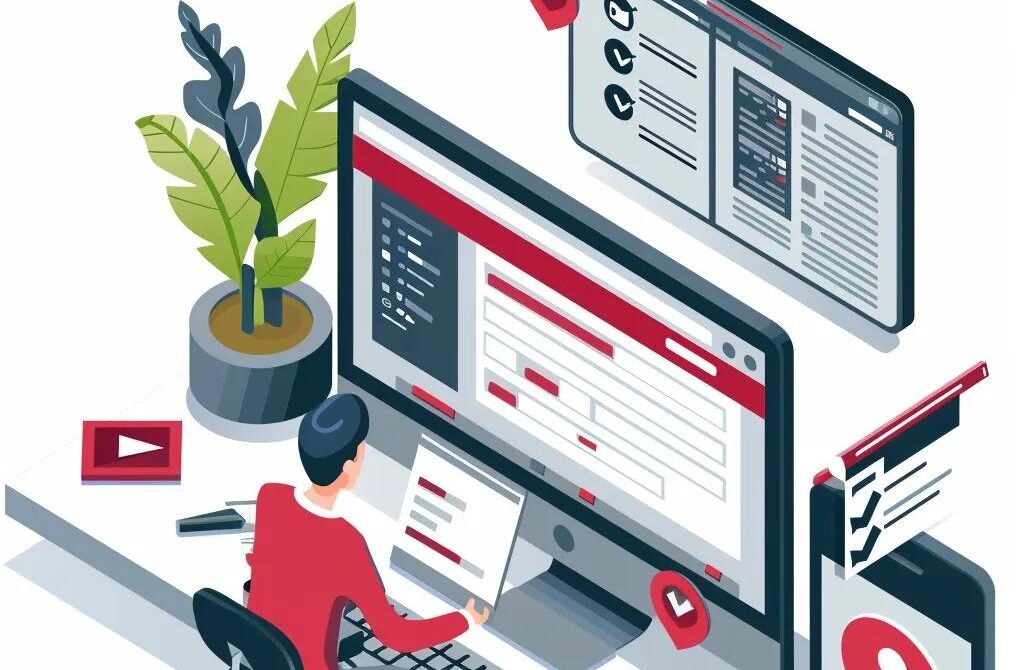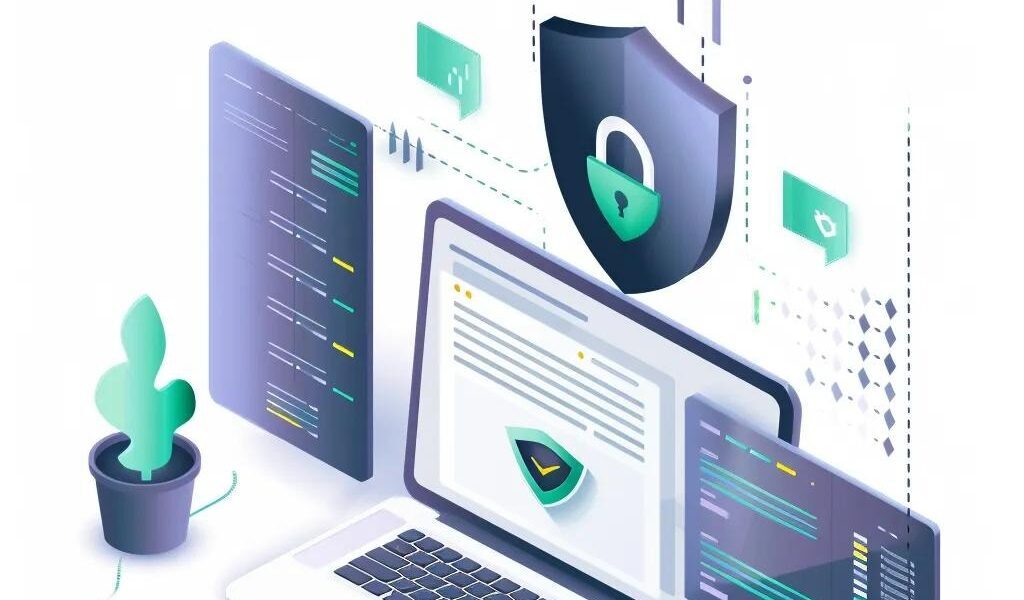Every 39 minutes, automated scripts are on the hunt, probing WordPress sites for vulnerabilities. This relentless pursuit puts small businesses and non-profits at risk. Dive into this guide to uncover practical steps for safeguarding your site with premier WordPress security solutions and services. From vulnerability scanning to ongoing maintenance, we cover it all. Discover why fortifying WordPress is crucial, how to efficiently detect and eliminate malware, the role of firewalls in blocking threats, and the best practices to shield your site from brute force attacks. By the end, you’ll have a clear path to implementing top-tier protection and collaborating with experts for enduring peace of mind.
Why Are WordPress Security Solutions a Must for Your Website?
WordPress security solutions are all about protecting your site from unauthorized access, data breaches, and downtime, ensuring trust and business continuity. Strong security measures reduce the risk of stolen customer data, defaced pages, and search-engine penalties. For small organizations, a single breach can halt operations, erode customer trust, and lead to recovery costs that far outweigh preventive investments. Understanding these stakes brings us to the common vulnerabilities attackers exploit.
What Are the Most Common WordPress Security Threats?

The WordPress ecosystem is a target for various threats exploiting weaknesses in plugins, themes, and core files. Attackers often use cross-site scripting (XSS) to inject malicious scripts, SQL injection to manipulate databases, and outdated extensions to gain backdoor access.
Each of these exploits can compromise your site’s integrity and data. Next, we’ll explore how a breach can devastate small-scale operations and community initiatives.
WordPress Security Threats
Studies show that outdated plugins are a major vulnerability in WordPress, often exploited by attackers to gain unauthorized access and inject malicious code. These vulnerabilities can lead to data breaches and site defacement, highlighting the need for regular updates and security audits.
Wordfence, “WordPress Security Threat Report” (2024)
This research backs up the discussion on standard WordPress security solutions that prevent threats and the importance of keeping plugins up-to-date.
How Do Security Breaches Impact Small Businesses and Non-Profits?
A successful attack can lead to stolen donor lists, lost sales, reputational damage, and costly remediation efforts. Downtime frustrates users and triggers search-engine delistings, while data leaks invite regulatory penalties. Organizations with tight budgets find recovery resources stretched, making proactive defense a strategic imperative that prevents crisis management and aligns with long-term growth.
Impact of Security Breaches
Research indicates that small businesses and non-profits suffer significant financial and reputational damage following a successful cyberattack. The costs associated with recovery, including forensic analysis, remediation, and lost revenue, can be substantial, underscoring the importance of proactive security measures.
Verizon, “Data Breach Investigations Report” (2024)
This citation reinforces the point about the impact of security breaches on small organizations and the need for preventative strategies.
What Are the Latest Trends in WordPress Vulnerabilities and AI-Powered Attacks?
Emerging threats include AI-driven malware that tests thousands of plugin exploits in minutes and supply chain attacks targeting popular dependencies. In 2023, new WordPress vulnerabilities surged by 24%, with cross-site scripting accounting for over half of all incidents. Security teams now harness AI for real-time anomaly detection, outpacing malicious automation. Staying informed on these trends is critical before implementing targeted scanning and patching strategies.
How Does Vulnerability Scanning Protect Your WordPress Site?

Automated vulnerability scanning identifies weaknesses in your WordPress installation by analyzing core files, plugins, and themes to flag outdated code or insecure configurations. Early detection prevents exploitation by revealing entry points before attackers can weaponize them. This proactive approach underpins every comprehensive security program.
What Types of Vulnerabilities Affect WordPress Websites?
Vulnerabilities range from code injection flaws and file permission misconfigurations to outdated libraries. Understanding each category helps prioritize remediation and strengthen defenses.
Mapping these vulnerabilities to scanning tools ensures comprehensive risk coverage and guides patch management.
How Do Automated Vulnerability Scanners Compare to Manual Security Audits?
Automated scanners rapidly analyze hundreds of files and plugins for known signatures, while manual audits involve expert review of code and configurations to uncover logic flaws.
Automated tools excel at routine checks and continuous monitoring, whereas manual audits deliver deeper insights into unique site customizations. Combining both yields the most thorough protection strategy.
How Does Patch Management Reduce Security Risks?
Patch management systematically applies updates to WordPress core, plugins, and themes, closing known vulnerabilities and preventing exploits. Regular patching eliminates over 97% of plugin-related weaknesses and maintains compatibility with security scanners. By automating update workflows and verifying success, you sustain a hardened environment that resists threat vectors.
What Are the Best WordPress Malware Removal Solutions?
Effective malware removal combines automated detection with manual verification to eliminate infections, restore file integrity, and prevent reinfection. A structured cleanup minimizes downtime and preserves SEO health. Our WordPress security solutions offer malware removal and more.
How Is Malware Detected and Cleaned from WordPress Sites?
Malware scanners use file integrity monitoring and signature databases to pinpoint infected files, then quarantine or sanitize malicious code. Expert cleanup involves restoring clean backups, replacing compromised files, and scanning databases for injected scripts. Post-cleanup validation confirms that virus definitions no longer flag any issues.
What Are the Most Common Types of WordPress Malware?
- Backdoors allow persistent unauthorized access.
- Ransomware encrypts files until a payment is made.
- SEO Spam injects hidden keywords to manipulate search rankings.
- Malicious Redirects send visitors to phishing or malware domains.
Addressing each type requires tailored detection rules and cleanup workflows to fully restore site integrity.
How Can Post-Hack Recovery Restore Your Website’s Integrity?
Post-hack recovery combines forensic analysis, vulnerability patching, and content verification to rebuild trust. By auditing logs to trace attack vectors, applying targeted fixes, and reinforcing user credentials, you not only remove malware but also prevent future incidents. This comprehensive recovery process lays the groundwork for ongoing security maintenance.
How Can a Web Application Firewall (WAF) Secure Your WordPress Site?
A Web Application Firewall filters incoming HTTP requests, blocking malicious traffic and preventing exploits before they reach your WordPress environment. By inspecting request patterns and enforcing rules, a WAF stops SQL injection, XSS, and known attack signatures in real time.
Web Application Firewall (WAF) Protection
A WAF effectively filters malicious traffic by analyzing HTTP requests and blocking threats before they reach the WordPress environment. This proactive approach helps prevent SQL injection, cross-site scripting (XSS), and other common attacks, enhancing overall site security.
OWASP, “Web Application Firewall Evaluation Criteria” (2023)
This citation supports the explanation of how a WAF secures a WordPress site by filtering malicious traffic.
What Is a WordPress Web Application Firewall and How Does It Work?

A WordPress WAF operates as a traffic gatekeeper that inspects each request against predefined security policies, blocking threats at the network or application layer. It leverages threat intelligence to continually update rules, ensuring new exploits are stopped before they reach your site’s codebase.
What Are the Differences Between DNS-Level and Application-Level Firewalls?
DNS-Level WAFs filter traffic at the network edge, providing global DDoS protection and IP-based blocking, while application-level firewalls operate within the hosting environment to inspect request payloads in depth.
Using both layers delivers defense-in-depth, ensuring volumetric and code-level threats are simultaneously mitigated.
How Does a WAF Protect Against DDoS and Brute Force Attacks?
By rate-limiting requests, blocking suspicious IP addresses, and enforcing login throttling rules, a WAF neutralizes distributed denial-of-service floods and automated credential stuffing attempts. This real-time filtering preserves server resources and prevents unauthorized access attempts from overwhelming your site.
How Do WordPress Security Audits and Hardening Improve Site Protection?
Security audits assess every aspect of your WordPress setup—from file permissions to database configurations—while hardening applies best practices that close common attack vectors. Together, they elevate baseline defenses and reduce residual risk.
What Are the Key Steps in a WordPress Security Audit?
A comprehensive audit sequences through file integrity checks, plugin and theme assessments, database security reviews, and configuration inspections.
Completing these steps uncovers hidden risks and guides targeted hardening efforts to fortify your site’s foundation.
How Do File Permissions and Database Security Enhance Protection?
Restrictive file permissions prevent unauthorized code uploads, while database security measures—such as limiting user privileges and enforcing strong credentials—block direct data manipulation. Together, they ensure that only authenticated processes can modify critical assets.
Why Is User Role Management Critical for WordPress Security?
Proper user roles enforce the principle of least privilege, granting only necessary access to contributors, editors, and administrators. By minimizing the number of high-privilege accounts and removing dormant users, you reduce the attack surface and limit potential damage from compromised credentials.
What Are Effective Strategies for WordPress Brute Force Attack Protection?
Preventing brute force attacks hinges on strengthening the login process to reject unauthorized attempts and deter automated bots from guessing credentials.
How Does Two-Factor Authentication (2FA) Strengthen Login Security?
Two-factor authentication adds a second verification layer—such as a time-based one-time passcode or biometric factor—so that even if a password is compromised, attackers cannot gain access without the additional token. This mechanism significantly reduces successful login breaches.
How Can Limiting Login Attempts Prevent Brute Force Attacks?
Configuring rate limits on login attempts enforces temporary lockouts or CAPTCHA challenges after several failures. This throttles automated scripts and forces attackers to invest more time per guess, deterring large-scale credential stuffing campaigns.
What Are Custom Login URLs and How Do They Help?
Changing the default path to a unique endpoint obscures your login page from bots targeting known URLs. By hiding the entry point, you reduce automated attack volume and improve overall site resilience.
What Are the Benefits of Ongoing WordPress Security Solutions & Maintenance Plans?
Continuous maintenance plans combine regular updates, real-time monitoring, and scheduled backups to keep your site ahead of emerging threats and ready for rapid recovery.
How Do Regular Updates of Core, Plugins, and Themes Prevent Vulnerabilities?
Timely updates close known security gaps in WordPress core, plugins, and themes, reducing the window of exposure. Automated patching workflows ensure you never fall behind, eliminating the majority of common exploits.
What Role Does Real-Time Security Monitoring Play?
Real-time monitoring tracks file changes, unusual login patterns, and traffic anomalies to trigger immediate alerts when threats emerge. Rapid detection accelerates response, limiting potential damage and downtime.
How Do Backup Solutions and Security Reporting Support Recovery?
Automated backups capture snapshots of your site daily, enabling swift restoration if an incident occurs. Detailed security reports document detected threats, applied fixes, and trends over time, empowering continuous improvement and compliance.
Protecting your WordPress site demands a multi-layered approach that unites scanning, patching, malware removal, firewalls, audits, and ongoing maintenance. By implementing these proven strategies and partnering with a trusted provider of WordPress website security services, you can secure your digital presence, safeguard customer trust, and focus on growing your mission without constant worry.
Expert Insights on WordPress Security Solutions
Jorge Leger, Founder and Digital Marketing Consultant at Astound Media, emphasizes the critical role of robust security for online success. Astound Media, an M/WBE-certified New York-based agency, specializes in helping organizations grow through strategic web design and marketing. With over a decade of experience in WordPress development, SEO, and marketing automation, Jorge partners with mission-driven teams to deliver high-performing websites and campaigns that drive tangible results. He brings a sharp eye for strategy and a deep understanding of what it takes to stand out online, particularly for small businesses and nonprofit organizations around the country.
“In today’s digital landscape, a secure WordPress site isn’t just a feature; it’s the foundation upon which trust and growth are built. Proactive security measures are an investment, not an expense, ensuring your online presence remains resilient and your mission unhindered by threats.” – Jorge Leger, Founder and Digital Marketing Consultant.




